Tue Jun 02 2020 · 18 min read
Thick as Thieves: Bringing Armenia’s Robber Barons to Justice

By Nerses Kopalyan
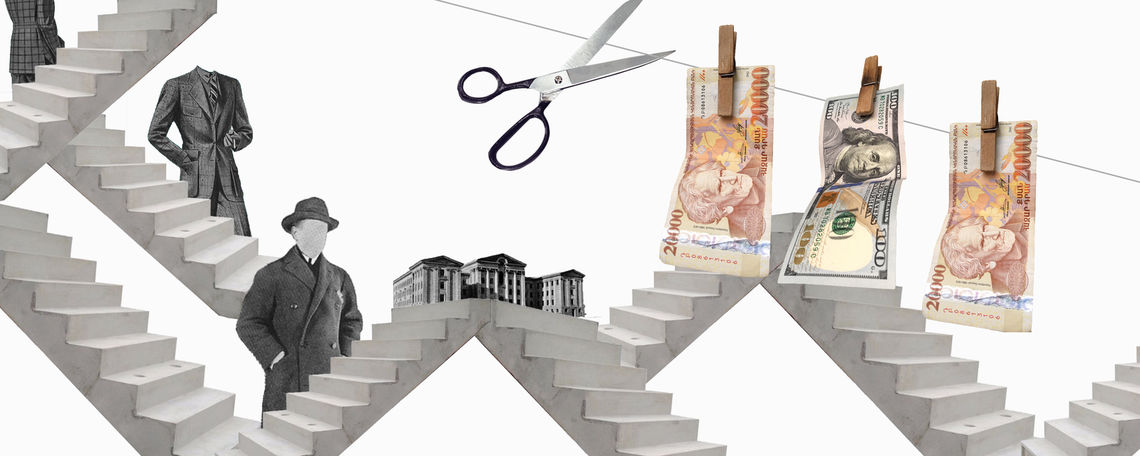
There is a certain inhumanity to stealing from the poor, from the disenfranchised, from children, and quite simply, from one’s own society. But the magnitude of such cruelty is further elevated when the theft is undertaken and brazenly justified by those in positions of political power.
Prior to the Velvet Revolution, Armenia did not simply suffer from chronic corruption, it also suffered from orchestrated, systematized embezzlement perpetrated by its politico-economic elite. Utilizing a vertical power structure resembling a pyramid, the country’s entire economic system was designed to accommodate systematized embezzlement, with a hierarchy of benefits commensurate to the levers of political power. The closer one was to the upper echelons of the pyramid hierarchy, the more benefits one accrued from this system of embezzlement. Exercising complete control over the country’s economic and legal system, these elites composed an intricate web of financial arrangements, exclusive business networks, tax-evasion schemes, off-shore laundering stratagems, kick-back mechanisms and methods of abusing state resources to reinforce these arrangements. The pejorative term oligarch became used as the scope of reference to this elite class of thieves. Some of these oligarchs became super oligarchs, forming exclusive monopolies while dominating and controlling industries and entire sectors of the economy. These super oligarchs became Armenia's Robber Barons.
The outcome was an open secret in Armenian society: the state did not serve the social or economic interests of the Armenian people, but rather the political and economic interests of the Robber Barons. What trickled down to the people were the crumbs: Armenia was reduced from a proud and industrious society to one of poverty. A culture of corruption became standardized, and a new social equilibrium was created: corruption is rational. The consequence of this rationalization, of course, was straightforward: normalization. Not only did corruption and embezzlement become acceptable, it also became normal. And if something is normal and rational, it clearly becomes justifiable. The depraved ethicality of the Robber Barons had now become embedded in Armenia’s political and economic culture.
The Velvet Revolution, in essence, was a reaction against this inhumanity that had subjugated Armenian society under the yoke of the Robber Barons. And now, it is time for accountability: the Robber Barons and their oligarchic accomplices are being brought to justice. But who are these Robber Barons, these so-called oligarchs, and how is newly-democratic Armenia bringing them to justice?
The current government, abiding by the general principles of transitional justice, has drawn a distinction between economic crimes and political crimes. The former pertains to illegal enrichment, tax evasion, unfair competition, and abuse of state resources for economic gain. The latter pertains to abuses of power, authority and gross violations of human rights. This two-tiered categorization allows for two tiers of accountability: monetary liability for economic crimes, and criminal liability for political crimes. At times, the two categories intertwine, as some oligarchs and their accomplices engaged in both. At the same time, there are those that engaged in economic crimes, but did not participate in political crimes. Punitive application of justice for each category is straightforward. For economic crimes, the objective is monetary penalization: reprieve-through-compensation. For political crimes, the objective is criminal prosecution.
Applying these two general scopes of criminal activity, the Armenian government has initiated a broad set of cases against the oligarchs and Robber Barons of the previous regime. The list of those charged is uncanny: it is composed of the upper echelon of the previous-pyramid hierarchy. Let us take a look at the high-profile cases.
The Sargsyan Clan
The Sargsyan clan, led by former President Serzh Sargsyan, along with his brothers, nephews, in-laws and close friends, reified and further refined the system of embezzlement that had absorbed Armenia’s economic system. They have been charged with a litany of crimes.
On December 4, 2019, Serzh Sargsyan was charged with embezzlement. The former President (who also gave a short cameo appearance as Prime Minister) is accused of embezzling approximately $1 million in government funds in 2013 by orchestrating a kick-back scheme. According to the charges, Sargsyan interfered in the bidding process for a state assistance program that provided cheap diesel fuel to farmers. Sargsyan is charged with rigging the bidding process in order to secure the government tender for Flash LLC, a fuel importing company owned by his close friend Barsegh Beglaryan. Flash LLC was awarded the tender despite submitting a higher bid than competing firm, Maxhur. The Special Investigation Service (SIS) has charged both the former President and Beglaryan for conspiring and orchestrating the embezzlement scheme. A lien has been placed on Sargsyan’s properties while both parties await trial.
The former President’s two brothers have also been implicated in a series of economic crimes, ranging from illegal enrichment and money laundering to tax evasion. Aleksandr Sargsyan, infamously known as “Sashik,” was investigated and charged with fraud in July 2018, while, at the same time, a range of criminal investigations remain ongoing (rumors persist of pending extortion and racketeering charges). Aleksandr Sargsyan partially conceded to his ill-gotten gains, agreeing to pay back $30 million to the government. The ongoing investigations, however, have yet to be revealed. Aleksandr Sargsyan is banned from leaving the country and a lien has been placed on his assets.
The former President’s second brother, Lyova Sargsyan, has been implicated in the massive corruption and embezzlement scandal associated with the construction of the North-South highway program. Lyova Sargsyan has been charged with money laundering and bribery, as the then-President’s brother illegally intervened and abused state power to attain benefits for himself and two of his associates from the $250 million project. Prosecutors allege that there is ample evidence demonstrating Sargsyan’s initiation of a bribery and embezzlement scheme that guaranteed construction contracts would be awarded to his associates, from whom he would receive a 50% kickback from expected profits. In conjunction with these charges, Lyova Sargsyan has also been charged with illegal enrichment and failing to declare assets as required by law. His two children, Narek and Ani, have also been implicated in this scheme. Narek Sargsyan, for his part, has also been charged with other crimes, ranging from possession of illegal weapons to possession of narcotics. While Lyova Sargsyan has fled the country and is declared wanted, his son Narek was arrested in the Czech Republic under an Interpol warrant and extradited to Armenia on December 21, 2019. Narek Sargsyan is currently in pre-trial detention.
Also implicated in the dealings of the Sargsyan brothers is Armenia’s former Chief of Police Vladimir Gasparyan, who was charged on September 18, 2019, for abuse of power resulting in financial losses for the state. Investigators revealed that, when Gasparyan was the chief of military police in 2000, he created fictitious positions for Lyova Sargsyan’s driver and Aleksandr Sargsyan’s two bodyguards. Even though the three men never worked in those positions, the three were paid a total of $46,000. While denying the charges, Gasparyan nonetheless agreed to provide restitution to the state for the $46,000. Gasparyan remains under investigation for various other cases and is barred from leaving the country.
Within the Sargsyan clan, perhaps the most sophisticated operative remains the former President’s son-in-law Mikayel “Mishik” Minasyan, who served as Sargsyan’s First Deputy Chief of Staff (2008-2012) as well as Ambassador to the Vatican (2013-2018). A faux aristocrat who fancied himself a media mogul, Minasyan used the state apparatus to methodically exercise economic and content control over much of Armenia’s non-independent media. Armenia’s Jared Kushner (before there was a Jared Kushner), Minasyan diversified his assets into real estate and the service sector. The leading Robber Baron of the newer generation, Minasyan used a sophisticated approach to illegal enrichment: a complex system of partnerships, shareholdings and investment ventures. In April 2020, Armenia’s State Revenue Committee (SRC) brought corruption charges against Mikayel Minasyan, accusing him of illegal enrichment, false asset disclosure and money laundering. The SRC reported that Minasyan’s 2017-2018 asset declaration (required by law for all public officials) showed that his assets had significantly increased, yet the source and justification for this increase was not substantiated; there was an obvious discrepancy between Minsasyan’s wealth-accumulation and his legally reported earnings. Furthermore, within the same reporting period, Minasyan failed to fully disclose his assets as required by law, and attempted to bypass this infringement by legalizing large numbers of illegally-acquired properties. A court-ordered arrest warrant has been issued for Minasyan; he remains at-large and his whereabouts remain unknown.
The inner workings of the Sargsyan clan were not specific to family members, as the former President’s close friends and associates also enjoyed privileged access as members of the upper echelon. Similar to Barsegh Beglaryan, another close friend of Sargsyan, Mihran Poghosyan, became a symbol of oligarchic arrogance and brazen corruption. The former Head of the Service for the Mandatory Execution of Judicial Acts and a former Member of Parliament with Sargsyan’s Republican Party, Poghosyan, among other things, was known as Armenia’s banana king for having established a monopoly in the produce industry. But his infamy lies in his involvement with the 2016 Panama Papers scandal, where it was revealed that Poghosyan owned three off-shore companies. The revelations implicated Poghosyan in a broad range of crimes, but the subsequent (pre-Velvet Revolution) criminal investigation that was launched was primarily for show, as the matter was quickly quashed and the investigation terminated. As expected, proximity to Sargsyan and oligarchic status guaranteed immunity for blatant violations of the law, a phenomenon known in Armenia as “having a strong roof.” The Pashinyan Government, however, reinstated the investigations into these matters, and on April 15, 2019, charges were brought against Poghosyan for embezzlement, fraud and abuse of power. Investigators revealed that, while in office from 2008-2016, Poghosyan abused the power of his office for personal gain by embezzling state funds in coordination with two of his subordinates.[1] Furthermore, during his tenure, the Service purchased 32 cars from a dealership with alleged connections to Poghosyan, thus violating conflict of interest laws.[2] In addition to the embezzlement, fraud and abuse of power charges, Poghosyan is also accused of tax evasion, having failed to remit $1.2 million in taxes. He fled to Russia where, upon the request of Armenian authorities, Russian law enforcement apprehended Poghosyan. However, he applied for political asylum, claiming persecution from Armenia’s new government. Contrary to the body of evidence provided by the Armenian authorities, Russia has refused to extradite Poghosyan.
Another important case involved Serzh Sargsyan’s head of security, Vachagan Ghazaryan, who was arrested in June 2018 for illegal enrichment and failure to disclose his assets. Authorities revealed that US$1.1 million and €230,000 in cash were found in Ghazaryan’s residence and one of his businesses. A few days later, Ghazaryan was detained outside of a bank in Yerevan with $120,000 and 436 million AMD (equivalent to $900,000) in a bag. Furthermore, authorities divulged that Ghazaryan was also planning to withdraw 1.5 billion AMD ($3.1 million) from a joint bank account he held with his wife. For a state employee, especially one in the security apparatus, to have access to such immense levels of cash was quite revealing of the broader picture of how the system of corruption and embezzlement had been normalized in Armenia’s economic system. The prosecution, however, noting that Ghazaryan’s actions primarily constituted economic crimes, consented to a plea bargain: Ghazaryan agreed to recompense the state in exchange for reprieve. In February 2020, Ghazaryan paid $5.8 million in damages to the state, and the charges were dropped.
The Khachatryan Family
Gagik Khachatryan, the former head of the State Revenue Committee and former Minister of Finance, was arrested in August 2019 following a corruption investigation conducted by the National Security Service (NSS). Colloquially dubbed the Super Minister, his family has accrued immense wealth, which it has diversified into various corporate and commercial interests within and outside of Armenia.[3] The documentation of Gagik Khachatryan’s wealth, and its incommensurability with his legal earnings, have been a subject of controversy for quite some time. One of the richest and most controversial people in Armenia, Gagik Khachatryan’s status as a super oligarch makes him one of Armenia’s more prominent Robber Barons. The ill-gotten Khachatryan empire is run by Gagik Khachatryan’s two sons Gurgen and Artyom, as well as his nephews Aram[4] and Karen Khachatryan. With a consortium of over 17 companies, under the umbrella of their Galaxy Corporation, the Khachatryans are emblematic of how Armenia’s previous economic system was designed to advance and protect the interests of the elite.
The charges against Gagik Khachatryan include large-scale embezzlement of public funds and abuse of power. He is in pre-trial detention and his request for bail has been denied. The charges against Khachatryan are quite comprehensive. They range from abusing state power and suppressing competition to illicit structuring of monopolies and tax evasion. Gagik Khachatryan’s tenure at the State Revenue Committee also entailed the placing of family members in important positions: both his son Gurgen and nephew Karen headed divisions within the State Revenue Committee. This organized abuse of power was evidently a family affair. Karen Khachatryan has been arrested, charged and is awaiting trial while on bail.
Gurgen Khachatryan has also been charged, specifically for embezzlement and colluding in a corruption scheme. He is charged with accepting a $22.4 million bribe from Sedrak Arustamyan, executive director of Multi Group, one of Armenia’s largest corporations owned by Gagik Tsarukyan, leader of the Prosperous Armenia Party. Prosecutors allege that, while Gagik Khachatryan was Head of the State Revenue Committee, his son Gurgen accepted the said bribe in the form of a wire transfer from Mr. Arustamyan. It is alleged that the allocation of $22.4 million was to secure privileged treatment for companies run by Arustamyan. For this specific corruption scheme, Arustamyan was charged and arrested on April 24, 2020, and is in pre-trial detention.[5] Gurgen Khachatryan, on the other hand, has gone on the run and has refused to turn himself in to face charges. He has claimed that the charges against him are politically motivated, while arguing that the $22.4 million transfer was a personal “loan.”
The Praetorian Guard of Oligarchs
As informal networks and parallel power structures informed Armenia’s pyramid system of corruption, this system also included a healthy number of oligarchs within the second tier of the hierarchy. Their economic and political power base remained local, unlike the more powerful super oligarchs sitting at the top of the hierarchy. This Praetorian Guard of oligarchs supported and reinforced the pyramid, both serving the upper echelon as well as profiting from the system. These cadres are known for both their monikers as well as the areas they “controlled,” whether districts or neighborhoods within Yerevan or cities outside of the capital. Regardless of their power base, however, they still remained subservient to the upper hierarchy. Prominent examples include Surik “Liska” Khachatryan’s dominance of the Syunik region, Hovik “Muk” Abrahamyan’s dominance of the Ararat region, Ruben “Nemetz Rubo” Hayrapetyan’s dominance of the district of Avan, Mher “Toghmaxi Mher” Sedrakyan’s dominance of the district of Erebuni, Gagik “Chorni Gago” Beglaryan’s dominance of the Metax neighborhood, Samvel “Lfik Samo” Aleksanyan’s dominance of the district of Malatia-Sebastia, Khachatur “Grzo” Sukiasyan’s dominance of the Silachi neighborhood, and Gagik “Dodi Gago” Tsarukyan’s dominance of the Abovyan region. This custom of nicknames and area-dominance is clearly more commensurate with Armenia’s criminal subculture than it is with any business or corporate culture. This, quite obviously, is not surprising, for criminal behavior was the norm through which many of these individuals became oligarchs and Robber Barons.
At the same time, it should be noted that, after the Velvet Revolution, several of these individuals transitioned from Robber Barons to “legitimate” businessmen, seeking to operate as industry tycoons that pay their taxes and abide by the law. Khachatur Sukiasyan, for example, is one of Armenia’s original Robber Barons, becoming a powerful monopolist under the Ter-Petrosyan Administration in the 1990s and expanding his financial empire through the decades. However, political issues with subsequent administrations led Sukiasyan to transition from super oligarch to business tycoon, assuming the posture of a Western corporate figure who pays his taxes and stays out of crime and politics. Similarly, Gagik Tsarukyan, one of Armenia’s wealthiest individuals, became a Robber Baron by serving the Kocharyan Administration, but political issues with the subsequent administration led Tsarukyan to transition from Robber Baron to one of posturing as a law-abiding business tycoon, especially after the Velvet Revolution. Consistent with this pattern, Samvel Aleksanyan, who became a Robber Baron under the Sargsyan Administration, transitioned from super oligarch to a posture of law-abiding business tycoon after the Velvet Revolution. Faced with a range of economic crimes, Aleksanyan swiftly paid lofty sums in penalties and agreed to work with the government in further compensating the state for past financial grievances. Collectively, in these specific cases, there appears to be a normative balance between accountability, economic crimes and transitional justice, as former oligarchs are financially penalized and provided the opportunity to become legitimate businessmen.
This, however, is the exception, and not the norm, as the majority of the Praetorian Guard are in the process of being brought to justice. Former Prime Minister Hovik Abrahamyan (2014-2016) is renowned for being one of the more prolific organizers of corruption from the previous regime. The most dominant political actor in Ararat during his tenure, Abrahamyan monopolized most of the industry and agriculture of the region through abuse of power and illegal enrichment. In September 2018, he was charged with “illegal participation in entrepreneurial activity” and abuse of power, specifically in relation to the Avazahatik Mining Company, where he obstructed the company’s operation and demanded a 60% share in the company, an act of extortion and racketeering. Further, in June 2019, authorities revealed that 15 parcels of land in Dilijan, and in the communities of Mkhchyan and Narek, were illegally sold to relatives and close associates of Abrahamyan. He remains the subject of several investigations.
The former controversial governor of the Syunik region, and its most renowned oligarch, Surik Khachatryan, is infamous for displaying a penchant for political and economic crimes. In November 2019, Surik Khachatryan was charged with abuse of power causing “substantial damage to the state.” Khachatryan is accused of giving illegal orders to two mayors of the Syunik region. From 2011-2012, Khachatryan ordered a village mayor to hand over the irrigation pipes that belonged to the community, worth over 5 million AMD ($10,500), to his brother. In 2016, he forced another mayor to illegally sell 0.43 hectares of land that belonged to the community to an associate. Khachatryan remains the subject of multiple investigations for a range of crimes. A warrant has been issued for his arrest. Khachatryan remains at-large in France and has blamed his medical condition for his refusal to return and face charges.
Gagik Beglaryan, the former Mayor of Yerevan, former Minister of Transport and Communications, and former head of Kentron district, has been charged with embezzlement and abuse of power. During his tenure, Beglaryan exercised extensive control over the city’s construction and jewelry industries, utilizing his position as mayor to illegally enrich himself through sophisticated kickbacks. Furthermore, during his tenure as Minister of Transportation, Beglaryan has been accused of having played an important role in orchestrating the embezzlement of funds from the North-South Highway construction project. In the current charges, he is accused of abusing his official power and appropriating real estate in downtown Yerevan as part of a broad embezzlement and kickback scheme. Beglaryan is at-large and an arrest warrant has been issued. His current location remains unknown, but authorities have indicated that he may be hiding out in the Netherlands.
One of the more prominent members of the oligarchic Praetorian Guard is Ruben Hayrapetyan, a former MP from the Republican Party, former head of Armenia’s Football Federation and an all-around thug well-known for senseless acts of violence. In May 2020, Hayrapetyan was indicted on charges of kidnapping and assault, along with his son and four associates. The charges stem from a 2016 incident where Hayrapetyan organized the kidnapping and torture of an employee he suspected of stealing from him. Further, authorities revealed that Hayrapetyan is part of a large-scale corruption scheme involving the Football Federation of Armenia, which he headed for 16 years. A court warrant has been issued for Hayrapetyan’s arrest, who is currently in Moscow and refuses to return to Armenia to face charges.
They Can Run and They Can Hide, But the State Can Seize Their Assets
Collectively, when observing these developments, one obvious pattern immediately stands out: most of the oligarchs facing charges have fled the country. Where are they hiding? Primarily in Russia, with some in Europe. Russia has been very reticent to extradite these individuals, an obvious snide against a democratizing Armenia. In Europe, the extradition process is long and tedious, and the likes of Surik Khachatryan and Gagik Beglaryan are counting on exhausting the procedural process to buy themselves time. In general terms, those who robbed and fled Armenia have taken a unified posture: as long as they remain outside the reach of Armenian law, they can never be brought to justice. Perhaps this is true for political crime, but it is no longer true for economic crimes. In April 2020, Armenia’s National Assembly passed an amended package of bills on the Forfeiture of Illegally-Acquired Property, which was subsequently signed into law in May by President Armen Sarkissian.
This new law shattered the sense of immunity that many of the former oligarchs presumed to have, providing the Government a powerful tool to go after economic crimes. The law stipulates that, upon probable cause, prosecutors may file with the court a request to seize the assets of individuals whose property values exceed their legal earnings by a value of 50 million AMD (US$105,000). Thus, if there is a discrepancy between the size of one’s assets and one’s legal income, and this discrepancy exceeds $105,000, the Government may request asset seizure from the court. This request for seizure does not require a trial, and as such, it speeds up the forfeiture process.[6] At the same time, the defendant is granted the opportunity to demonstrate and provide evidence of the sources of the discrepancy and the financial means through which the assets were accrued. If the defendant sufficiently demonstrates that the attainment of the assets were accrued through legal means, the prosecution cannot seize said assets. But if the defendant is not able to explain the discrepancy, nor demonstrate the attainment of the assets through legal earnings, then the court may rule in favor of forfeiture. The defendant will not be liable for criminal prosecution, and as such, only their property may be seized. Alternatively, the defendant may plea bargain for a negotiated financial penalty to resolve the matter. The logic of the law, therefore, is straightforward: average citizens cannot have such discrepancies between earnings and assets, and as such, it is evident that the target remains those who have engaged in illegal enrichment. Furthermore, Prime Minister Pashinyan has made it clear that the law will be specifically applied to the former oligarchic class as a mechanism of returning funds looted from the state.
Needless to say, this new law has created an inescapable paradox for the former oligarchic class. Either they proceed in addressing their economic crimes by paying monetary penalties, or forfeit their ill-gotten assets. And for those former oligarchs who have fled the country, they must either return and face the music, or have their Armenian assets seized in absentia. As it has been evident, and as tautological as it may sound, using the law to abuse the law has been the method of choice by the previous elite to insulate themselves from legal accountability. Clearly, this is no longer tenable. One way or another, the Robber Barons that plundered Armenia are being brought to justice.
Note:
Also read Lusine Sargsyan’s “Primer: Post-Revolution Criminal Cases,” a comprehensive list of the most high-profile investigations launched against former officials and their associates following the Velvet Revolution.
Primer: Post-Revolution Criminal Cases
By Lusine Sargsyan
A comprehensive list of the most high-profile investigations launched against former officials and their associates following the 2018 Velvet Revolution.
transitional justice
white paper
Transitional Justice Agenda for the Republic of Armenia
By Nerses Kopalyan
Should Armenia implement the tools of transitional justice? This White Paper, developed by Dr. Nerses Kopalyan is a comprehensive transitional justice agenda for the Republic of Armenia.
Armenia Gets Serious About Reforms: Making Sense Out of Vetting
By Nerses Kopalyan
As an instrument of transitional justice, vetting is designed to “cleanse” state institutions that are tainted by systemic corruption, nepotism, and incompetence. Vetting of personnel is the first step toward the broader goal of institutional reform, writes Dr. Nerses Kopalyan.
podcast
Author of EVN Report's White Paper "Transitional Justice Agenda for the Republic of Armenia," Dr. Nerses Kopalyan speaks about the imperative of transitional justice to help heal Armenian society and restore trust and faith in institutions.
by the same author
Between Honor and Shame: Understanding Corruption in Armenia’s Political Culture
By Nerses Kopalyan
Is corruption inherent to the post-Soviet Armenian political culture, and if so, does this make the political culture of Armenia incompatible with democratic values? Dr. Nerses Kopalyan examines how conflictual matters that should be resolved in the public sphere are almost always resolved within the cultural rules of the private sphere.
Negating the Honeymoon Discourse
By Harout Manougian , Nerses Kopalyan
The International Republican Institute recently published its fourth public opinion survey since the Velvet Revolution. The survey found that a healthy majority of Armenians believe the country is heading in the right direction.
Is the Diaspora Patriotic Enough?
By Nerses Kopalyan
If we are to develop and build a functional relationship between the Homeland and the Armenian Diaspora, we need to understand the discrepancy between the Diaspora’s devotion to Armenianness and the Republic of Armenia’s vision for the Armenian world.
Armenia Combats the Coronavirus: State Capacity and the Diaspora
By Dr. Shant Shekherdimian , Nerses Kopalyan
The experience of combating the coronavirus pandemic in Armenia can and should serve as an important foundation to develop long-term and institutionalized mechanisms of crisis management with the support of Diasporan experts and professionals.
EVN Report welcomes comments that contribute to a healthy discussion and spur an informed debate. All comments will be moderated, thereby any post that includes hate speech, profanity or personal attacks will not be published.
----------------------------------
1. Specifically, Poghosyan appointed his driver and bodyguard to different positions within the Service, and despite the fact that the two never worked in those positions, they were paid a total of $91,000 in salaries.
2. This scheme cost Armenian taxpayers over $41,000, and collectively, Poghosyan is accused of directly embezzling $132,000 from public funds.
3. The Khachatryans purchased the Mozart Confectionary Factory in Austria for approximately $200 million, while Gagik Khachatryan’s sons have been recorded purchasing multi-million dollar properties in the United States, primarily in Southern California. They also have business and financial interests in Georgia, England and France.
4. Aram Khachatryan is well known for his involvement in the Panama Papers, where, through his transnational Bradwell Investment Corp, he has been accused of money laundering and tax evasion.
5. As part of the ongoing investigation into the alleged financial abuse and mismanagement of resources during the construction of the North-South Highway, Sedrak Arustamyan has also been charged with fraud and tax evasion. According to the Government, Mr. Arustamyan helped a Chinese construction company (Sinohydro Corporation) build a 56-kilometer highway as part of the North-South highway to evade $503,000 in taxes. The company paid an Armenian firm, owned by Arustamyan and former Minister of Transport and Communication Gurgen Sargsyan, $2.2 million in consulting fees as part of the scheme. Gurgen Sargsyan also faces charges of fraud and tax evasion.
6. There has been selective controversy and legal misunderstanding on the principle of asset seizure without a trial. However, this principle is an internationally-accepted legal doctrine that is widely applied in countries undergoing transitional justice. More specifically, the United Nations Convention Against Corruption, to which Armenia is a signatory, stipulates in Article 52, Article 53, and Article 57 mechanisms of addressing economic crimes and recovering assets, especially in cases of embezzlement. See https://www.unodc.org/res/ji/import/international_standards/united_nations_convention_against_corruption/united_nations_convention_against_corruption.pdf
Comments
Mike Zohrab Dishakjian Dishakjian
6/8/2020, 11:37:57 AMI liked everything I read on your site. Excellent analysis of the events in Armenia...





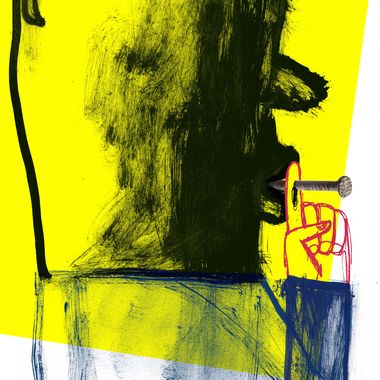
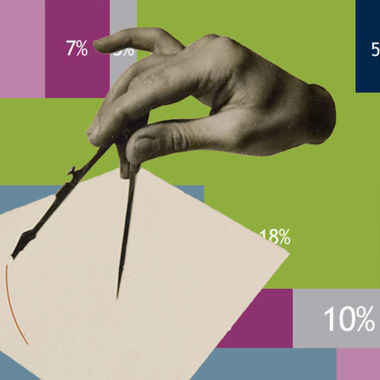
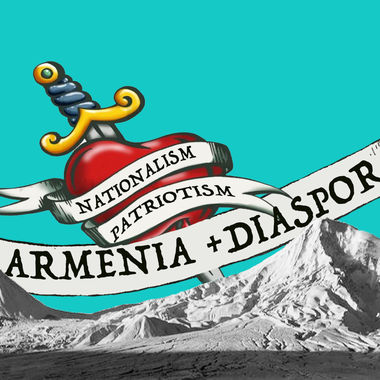
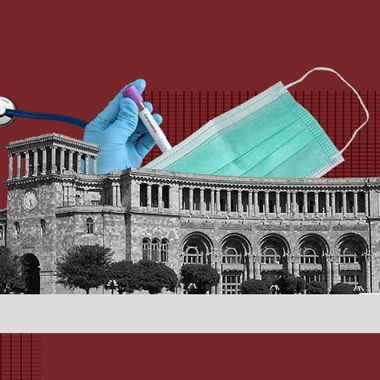


EVN Report welcomes comments that contribute to a healthy discussion and spur an informed debate. All comments will be moderated, thereby any post that includes hate speech, profanity or personal attacks will not be published.